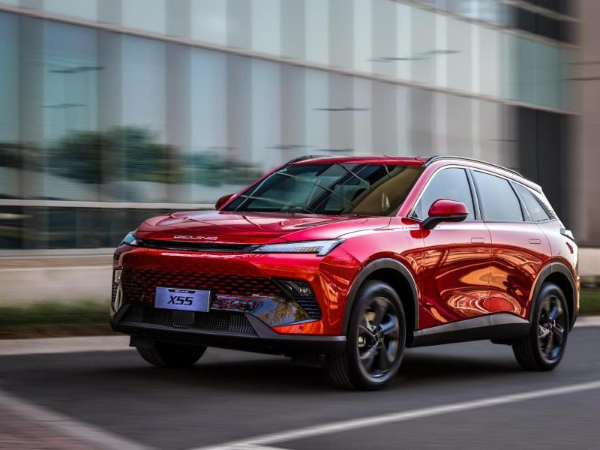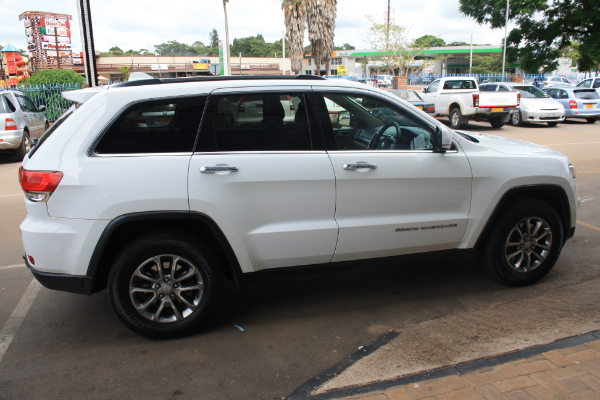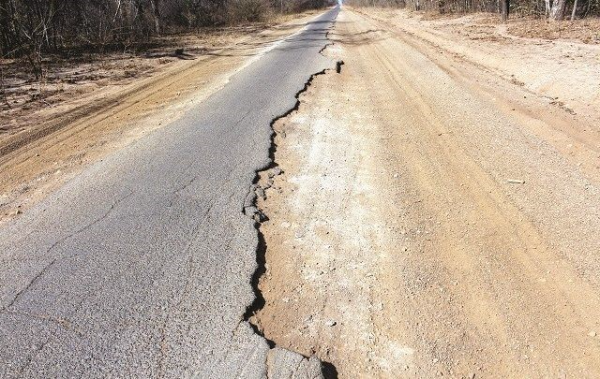What you need to know about Tractor loader Backhoes
WHAT YOU NEED TO KNOW ABOUT TRACTOR LOADER BACKHOES
Buying a tractor loader backhoe (TLB) is a big investment, and you do not want to buy the wrong equipment. Buying less power than you need can be disastrous, and buying more than you need is a significant waste of money. How do you determine what you need?
Start by answering a few questions:
Is this for a commercial business or a hobby farm?
Will you use the tractor for other purposes?
For what jobs do you need the backhoe?
How big is the job site?
Is the job site level?
Will you need to move between job sites?
WHAT’S YOUR PURPOSE? SMALL OR HOBBY FARM, COMMERCIAL BUSINESS, OR BIG AGRICULTURE?
When it comes to agricultural, residential, construction, and industrial workplaces, a backhoe loader is an extremely valuable and versatile piece of equipment. It is basically a tractor that features a large front-end bucket that can push, scoop, and level materials, and can also carry heavy loads. Located on the rear end, is a bucket designed for digging, which allows the backhoe to perform a variety of tasks.
You can buy an industrial tractor with loader and backhoe permanently attached, but unless you need to perform a single type of job, like construction excavation, we don’t recommend it. Most people need detachable implements for versatile operations.
There are businesses that need a tractor for a single purpose. Cities and municipalities, for example, buy big heavy tractor loader backhoes with rubber tires and the capacity to load debris into a dump truck. One piece of equipment to perform a single job, over and over. The New Holland B95 is a good example, and a popular choice.
Before you decide, consider everything you might want to accomplish with your tractor. Will you need it to grade, till, plow, mow, clear land, water plants, move hay, blow snow…?
Unless you have a very specialized task in mind, the answer is probably yes to all of the above.
We shall start there, with a tractor and detachable implements.
WHAT ARE TRACTOR LOADER BACKHOES USED FOR?
Typical tractors with backhoe and loader attachments are perfect for medium-sized jobs; powerful enough to get the job done, but smaller than their industrial counterparts. They have the added attraction of sufficient speed to drive them on the roads to a job site – no need for a trailer for short distances. With a top speed of about 32 km/h. You will not be making any friends on two lane blacktops, but you will save the time and aggravation of loading and unloading a trailer.
You can use a TLB:
On the farm – There are countless reasons you may need to dig on a farm. You might be laying pipes for an irrigation system, spreading gravel and grading a road, or leveling the foundation for a new outbuilding, and if you do not have TLB attachments, you shall wish you that you did. Always make sure you call relevant authorities before you dig to make sure you won’t hit any sub-terrain utility lines. This is absolutely crucial anywhere. We forget that we may cause major damage by just digging willy nilly without authority.
Construction sites – TLBs come in handy for laying foundations, doing demolition work, and hauling materials.
Landscaping projects – Excavation is a staple for landscapers. They need to dig and pile dirt to establish interesting levels, fill in low-lying areas or dig ponds, remove stumps, or spread gravel on paths or driveways. You can even use it to move boulders to exact spots to balance things out.
TRACTOR SIZE AND POWER
The size of the engine and the lift capacity are important. The tractor’s hydraulic horsepower determines the force and digging depth for the backhoe and loader. You need to check the specs carefully to be sure the tractor and implements are rated for the depth you need to dig and the weight you need to move.
Kubota’s TLBs have a wide range of power. The largest backhoe loader, the M62 model, has 63 HP, while the smallest models start at 21.6 HP. The Kubota BX23S is the only sub-compact in Kubota’s current line-up that comes with a factory-installed backhoe, but on the larger models, one can be added. You can’t add a backhoe to a BX tractor that didn’t come with one from the factory.
You need a machine with enough power, lifting capacity, and weight to perform the jobs you need done. You also need to consider the size of the equipment. Some jobs may require more compact equipment with a tighter turning radius. In that case, you may want to consider a skid steer instead of a TLB. If you are attempting to clear and grade land or dig a large pond, then the excavator or compact track loader would be a better choice than smaller TLB machines. They are designed for heavy excavation and are much more efficient at putting your land on “grade”.
BACKHOE SPECS
Believe it or not, horsepower is not everything. It is important, but you also need to make sure you have the right backhoe for the job.
Digging Depth – The digging depth of backhoes vary by their size. Smaller backhoes can dig 2 to 3 metres deep, while other larger backhoes dig up to 4 to 5 metres deep.
Front Loader Bucket Width – Typically, the front bucket of a backhoe has smooth edges and sharp corners, making it easy to push through material. The width ranges from 48-96 inches, and is capable of carrying loads from 270 to 950 kgs
Rear Bucket Width – Smaller 30cm-wide buckets, on average, have 0.071 cubic metres of space and can haul 150kgs of material. Larger, 152.4 cm-wide buckets can support 0.57 cubic metres and carry up to 304 kgs. Keep in mind…if you are looking to dig stumps out of the ground, the less your bucket width is, the more power you will have ripping through the roots and soil. You can purchase several buckets of different sizes to do different tasks that require different widths.
Lifting Capability – The width of the front and rear buckets, and the amount of material they can carry are greatly significant for overall productivity. Knowing beforehand what you will be hauling is important when choosing the right equipment.
Operating Weight – Lighter equipment will have minimal effect on the terrain you are working on. Jobs such as golf courses, require equipment that will not leave any trace behind. If leaving track marks in the ground is not an issue, larger equipment with heavier operating weight might be a better choice.
PUTTING IT TOGETHER
Your daily tasks dictate the size and power you need for your TLB. The bigger the job, the more tractor you need. If you have a one-time heavy need, it’s cheaper to rent, but if you’re doing heavy construction or have other considerations that require extra power every day, size up.
Here are some general rules of thumb. If you have a:
Small family farm or hobby farm, and you’re working on solid, mostly level ground, a compact or sub-compact tractor with a loader and backhoe are perfect for most jobs. You’ll be able to dig shallow trenches, move loose materials like mulch and gravel, maintain your roads, pull small stumps, and perform dozens of other common tasks around your property.
Medium size or small commercial farm, and/or a property with more than gently rolling hills, you’ll need the extra weight and power of a compact TLB or utility tractor equipped with a loader and backhoe. For sloped (or soggy) properties, consider things like tires and weight distribution.
Large commercial operations – big tractors for big jobs! The extra width and power of a big rig cuts down on trips across fields, and bigger bucket capacity reduces number of lifts. Anytime you can cut workload and time spent, it’s a win.
If you’re still confused about tractor loader backhoes, email motoring@drivetorque.com and we will connect you to our network of experts.
Buying a tractor loader backhoe (TLB) is a big investment, and you do not want to buy the wrong equipment. Buying less power than you need can be disastrous, and buying more than you need is a significant waste of money. How do you determine what you need?
Start by answering a few questions:
Is this for a commercial business or a hobby farm?
Will you use the tractor for other purposes?
For what jobs do you need the backhoe?
How big is the job site?
Is the job site level?
Will you need to move between job sites?
WHAT’S YOUR PURPOSE? SMALL OR HOBBY FARM, COMMERCIAL BUSINESS, OR BIG AGRICULTURE?
When it comes to agricultural, residential, construction, and industrial workplaces, a backhoe loader is an extremely valuable and versatile piece of equipment. It is basically a tractor that features a large front-end bucket that can push, scoop, and level materials, and can also carry heavy loads. Located on the rear end, is a bucket designed for digging, which allows the backhoe to perform a variety of tasks.
You can buy an industrial tractor with loader and backhoe permanently attached, but unless you need to perform a single type of job, like construction excavation, we don’t recommend it. Most people need detachable implements for versatile operations.
There are businesses that need a tractor for a single purpose. Cities and municipalities, for example, buy big heavy tractor loader backhoes with rubber tires and the capacity to load debris into a dump truck. One piece of equipment to perform a single job, over and over. The New Holland B95 is a good example, and a popular choice.
Before you decide, consider everything you might want to accomplish with your tractor. Will you need it to grade, till, plow, mow, clear land, water plants, move hay, blow snow…?
Unless you have a very specialized task in mind, the answer is probably yes to all of the above.
We shall start there, with a tractor and detachable implements.
WHAT ARE TRACTOR LOADER BACKHOES USED FOR?
Typical tractors with backhoe and loader attachments are perfect for medium-sized jobs; powerful enough to get the job done, but smaller than their industrial counterparts. They have the added attraction of sufficient speed to drive them on the roads to a job site – no need for a trailer for short distances. With a top speed of about 32 km/h. You will not be making any friends on two lane blacktops, but you will save the time and aggravation of loading and unloading a trailer.
You can use a TLB:
On the farm – There are countless reasons you may need to dig on a farm. You might be laying pipes for an irrigation system, spreading gravel and grading a road, or leveling the foundation for a new outbuilding, and if you do not have TLB attachments, you shall wish you that you did. Always make sure you call relevant authorities before you dig to make sure you won’t hit any sub-terrain utility lines. This is absolutely crucial anywhere. We forget that we may cause major damage by just digging willy nilly without authority.
Construction sites – TLBs come in handy for laying foundations, doing demolition work, and hauling materials.
Landscaping projects – Excavation is a staple for landscapers. They need to dig and pile dirt to establish interesting levels, fill in low-lying areas or dig ponds, remove stumps, or spread gravel on paths or driveways. You can even use it to move boulders to exact spots to balance things out.
TRACTOR SIZE AND POWER
The size of the engine and the lift capacity are important. The tractor’s hydraulic horsepower determines the force and digging depth for the backhoe and loader. You need to check the specs carefully to be sure the tractor and implements are rated for the depth you need to dig and the weight you need to move.
Kubota’s TLBs have a wide range of power. The largest backhoe loader, the M62 model, has 63 HP, while the smallest models start at 21.6 HP. The Kubota BX23S is the only sub-compact in Kubota’s current line-up that comes with a factory-installed backhoe, but on the larger models, one can be added. You can’t add a backhoe to a BX tractor that didn’t come with one from the factory.
You need a machine with enough power, lifting capacity, and weight to perform the jobs you need done. You also need to consider the size of the equipment. Some jobs may require more compact equipment with a tighter turning radius. In that case, you may want to consider a skid steer instead of a TLB. If you are attempting to clear and grade land or dig a large pond, then the excavator or compact track loader would be a better choice than smaller TLB machines. They are designed for heavy excavation and are much more efficient at putting your land on “grade”.
BACKHOE SPECS
Believe it or not, horsepower is not everything. It is important, but you also need to make sure you have the right backhoe for the job.
Digging Depth – The digging depth of backhoes vary by their size. Smaller backhoes can dig 2 to 3 metres deep, while other larger backhoes dig up to 4 to 5 metres deep.
Front Loader Bucket Width – Typically, the front bucket of a backhoe has smooth edges and sharp corners, making it easy to push through material. The width ranges from 48-96 inches, and is capable of carrying loads from 270 to 950 kgs
Rear Bucket Width – Smaller 30cm-wide buckets, on average, have 0.071 cubic metres of space and can haul 150kgs of material. Larger, 152.4 cm-wide buckets can support 0.57 cubic metres and carry up to 304 kgs. Keep in mind…if you are looking to dig stumps out of the ground, the less your bucket width is, the more power you will have ripping through the roots and soil. You can purchase several buckets of different sizes to do different tasks that require different widths.
Lifting Capability – The width of the front and rear buckets, and the amount of material they can carry are greatly significant for overall productivity. Knowing beforehand what you will be hauling is important when choosing the right equipment.
Operating Weight – Lighter equipment will have minimal effect on the terrain you are working on. Jobs such as golf courses, require equipment that will not leave any trace behind. If leaving track marks in the ground is not an issue, larger equipment with heavier operating weight might be a better choice.
PUTTING IT TOGETHER
Your daily tasks dictate the size and power you need for your TLB. The bigger the job, the more tractor you need. If you have a one-time heavy need, it’s cheaper to rent, but if you’re doing heavy construction or have other considerations that require extra power every day, size up.
Here are some general rules of thumb. If you have a:
Small family farm or hobby farm, and you’re working on solid, mostly level ground, a compact or sub-compact tractor with a loader and backhoe are perfect for most jobs. You’ll be able to dig shallow trenches, move loose materials like mulch and gravel, maintain your roads, pull small stumps, and perform dozens of other common tasks around your property.
Medium size or small commercial farm, and/or a property with more than gently rolling hills, you’ll need the extra weight and power of a compact TLB or utility tractor equipped with a loader and backhoe. For sloped (or soggy) properties, consider things like tires and weight distribution.
Large commercial operations – big tractors for big jobs! The extra width and power of a big rig cuts down on trips across fields, and bigger bucket capacity reduces number of lifts. Anytime you can cut workload and time spent, it’s a win.
If you’re still confused about tractor loader backhoes, email motoring@drivetorque.com and we will connect you to our network of experts.









